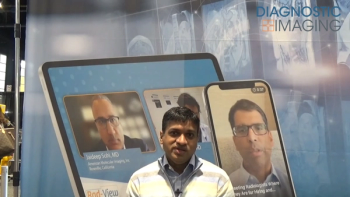
Report from HIMSS: EMR automates resident training
The electronic medical record provides an automated way to deal with the added complexity evaluators face as they attempt to measure not only what today’s medical residents know, but also how well they perform using that knowledge.
The electronic medical record provides an automated way to deal with the added complexity evaluators face as they attempt to measure not only what today's medical residents know, but also how well they perform using that knowledge.
The EMR represents an electronic repository of health information that can both deliver knowledge to residents and collect information about their performance and competency, said Dr. Michael Zaroukian, EMR medical director at Michigan State University.
The information technology goals for facilitating evaluation should include decreasing the burden of performing those evaluations, maintaining access to evaluations, and linking evaluation data to action, Zaroukian said at a physician and IT symposium at the HIMSS conference Sunday.
The ability to provide real-time feedback on student performance is especially important in an era when physicians have less time for teaching, the rewards for teaching are limited, and teaching hospitals are experiencing more strain on their resources.
By providing performance feedback on a continual basis, Web-based evaluation tools improve on the current paper-based method, which can be spotty, intrusive, and snapshot-like, he said.
Growing concerns about the quality of healthcare in the U.S. prompted the Accreditation Council for Graduate Medical Education to reexamine medical training and education. The organization identified the information infrastructure as a major component of the solution to the problem and targeted informatics as an important anchor for improving medical education, Zaroukian said. Not only could use of the EMR and information technology streamline resident training, but it could also help reduce medical errors and improve the overall quality of healthcare.
Healthcare informatics can play an important role in physician education at all levels, he said. Even as undergraduates, medical students could be taught informatics use, methods to reduce medical errors, and appropriate resource use.
Later in the education process, informatics training and education might be incorporated into the six general competencies outlined by the ACGME: patient care, medical knowledge, practice-based learning and improvement, interpersonal and communication skills, professionalism, and system-based practice, he said.
Zaroukian predicted a future in which medical students not only learn to use the EMR, but use the EMR to learn medicine.
View more stories and images from the conference at the Diagnostic Imaging
Newsletter
Stay at the forefront of radiology with the Diagnostic Imaging newsletter, delivering the latest news, clinical insights, and imaging advancements for today’s radiologists.



























